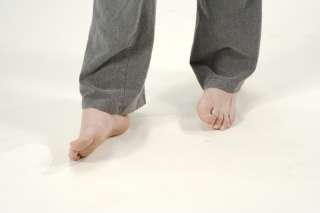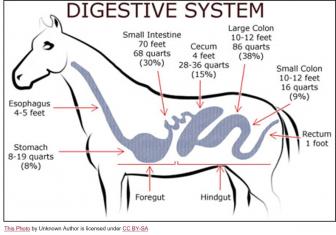
Seven exercises to improve balance in the saddle
Seven exercises to improve balance in the saddle
Are you having problems with the training trot? Is it harder to bend the horse in one direction than the other? Feeling unbalanced while jumping? German sports physiologist Eckart Meyers developed an exercise program to enable riders to overcome such challenges. His Balimo program (“BALance In MOtion” / “Balance in Motion”) teaches you to balance muscles, strengthening weak ones and relaxing enslaved ones. It helps improve coordination and “unblock” tension in the body that prevents it from moving freely.
Eckart has identified the most common muscle imbalances riders face and has developed over 100 exercises to help them balance them. Balimo exercises improve “cross-coordination,” the connection between the left and right sides of the brain. Moving your diagonal limbs (left arm/right leg, right arm/left leg) together encourages the development of these communications in the brain, which in turn helps balance both sides of the body. As a result, you can achieve good coordination of the legs, arms and buttocks in the saddle.
By focusing too much on his position while riding, the rider cannot fully focus on his horse. The best way to achieve harmony is to work on your body first, and then ride.
But not everyone has enough time to warm up and ride. If you are as busy as most riders, you need to integrate an exercise program to develop body balance into your daily routine. This article will show you how to do it, as well as some fun Balimo exercises that will help you balance your muscles and improve your cross-coordination. Fun is the key word in these workouts. The more you enjoy what you are doing, the faster your body will learn and improve, and the more likely you are to keep working on yourself.
Warm-up
Before you try to improve your body (and before you get into the saddle), give yourself a chance to warm up. A proper warm-up will prepare your cardiovascular, nervous and hormonal systems for work. Your breathing will increase, allowing you to speed up the delivery of essential nutrients and oxygen to your muscles and quickly remove by-products such as lactic acid. Your body temperature will rise, helping to reduce friction between muscle fibers, reducing tension, spasms, stimulating an increase in the amount of cartilage nutrient fluid in your joints and reducing the risk of injury. It will also increase your range of motion, increase your flexibility and allow you to relax. The degree of interaction between your nervous system and muscles, tendons and ligaments will also increase, which will improve awareness and coordination of the body. A good warm-up prepares you mentally and emotionally to focus on the task at hand.
Ideally, the warm-up should last about 20 minutes, but if your time is limited, break it down into mini-workouts throughout the day. The effect will last until you are on your horse, even if it happens after a few hours.
Below – some warm-up exercises.
Exercise 1. Four Step Variations – Four Foot Positions
Benefits. This exercise is good not only for warming up. It enhances your awareness of your body.
How to perform. Start with normal walking, take a few steps, then walk on the outside of your feet (see photo above). Then walk on the insides of your feet (photo below). Then go on your toes and finally on your heels. When you return to a normal step, you will feel lightness and balance in your body. This simple exercise can be done at home, while walking your dog, on your way to work, or even when you are holding your horse.
By experimenting with changing the position of the center of gravity and the body, you teach your body to recognize when it is upright and centered and when it is not. This concept can be applied to any physical movement on the ground or in the saddle. For example, in the saddle, you can lean far to the right and then far to the left – this will make it easier for you to recognize when you are really sitting in the center and when you are not.
Exercise 2
Advantages. Another full-body warm-up exercise with an added cross-coordination component.
How to perform. Jumping sounds easy, doesn’t it? But to improve your cross-coordination skills, try making a move that crosses your midline (an imaginary line that goes down the middle of your body, crossing your nose and navel) with your diagonal limbs. Make sure you twist your body with every step.
Pull the left leg up and to the right with the knee, and the right diagonal arm to the left. On the next step, twist in the other direction, right knee out to the left and up. Left hand to the right. Do it everywhere: walking down the hallway of the stable, when you go to the pasture to pick up a horse, walking from your car to the grocery store. You may feel foolish at first, but you will soon see how positively this will reflect on your riding!
Exercise 3. Benefit
Advantage. It is believed that the diagonal movement of the knee and elbow towards each other is an important component of the development of coordination in infants. By doing it as an adult, we strengthen the connection between the left and right hemispheres of our brain.
How to perform. While watching TV, you can easily crawl on the floor of the room for several minutes. Try several options: crawl forward like a bear, sideways like a crab, belly on the ground, or push your elbows forward (military style). The latter option also helps to loosen and relax the lower back.
The following exercises will help with common rider problems hiding in certain parts of the body.
Head
You probably have no idea how hard it is on your body to hold your heavy head (it usually weighs 5 to 7 kg!), and how much even a slight head tilt can throw the rest of your body off balance. A slight tilt of the head to one side can cause the weight to shift in the opposite direction. So, for example, if your head tilts slightly to the right, you will sit more to the left in the saddle. Any misalignment between your head and spine causes stiffness in the occipital joint, which connects your head to your neck. This critical joint must be free to allow other joints in your body to move freely and rhythmically with the horse’s movements.
Your eyes play a vital role in your balance and coordination. Since vision is one of our dominant senses, the movement of the eyes leads to the movement of the head and body. If your gaze is fixed, the head and neck will be stiff. By learning to move your eyes and head independently, you can increase the range of motion of your head and allow the rest of your body to move more freely underneath it.
Exercise 4. Shake your head
Benefits. It relaxes your neck joint and relieves tension in your neck.
How to perform. We sit on a hard chair, balancing on two sitting bones, arms hanging at our sides, looking straight ahead. Using as little force as possible, gently shake your head from side to side, left to right (head movement in denial) in a small range of motion, about a couple of centimeters in each direction. Do this for about one minute. Then turn your head slightly to the left and repeat these small head swings to the left and right from the new position for another minute. Repeat the same and turn your head to the right.
Exercise 5
Advantages. The exercise helps separate eye and head movement, which improves relaxation, balance, and coordination.
How to perform. Sit or stand looking straight ahead. Then slowly turn your head to the right and left, looking in the direction you are turning. Repeat this 10 times in each direction. Then turn your head to the right and left by moving your eyes in the opposite direction, such as looking to the left while you turn your head to the right. Do this 10 times in each direction. Experiment throughout the day, occasionally moving your eyes and head in other ways.
Chest and upper torso
When your upper body is relaxed and balanced, you feel like it is supporting itself, allowing your pelvis to swing freely under it and allowing your arms to hang freely along your sides. This soft, flowing sensation is carried through the reins to the horse’s mouth, improving the consistency and sensitivity of your contact, as well as the accuracy of your signals and controls.
Exercise 6. Eagle
Benefits. You don’t even have to get out of bed to do this exercise! It helps open the chest and relax stiff shoulders by strengthening the muscles between the shoulder blades. As a result, it will be easier for you to balance your upper body in the saddle and maintain soft contact with the reins.
How to perform.
Step 1. Lie on your stomach with your arms stretched out at your sides, palms down. The head is turned to the left, the right leg is straight, the left leg is bent at the knee at a 90-degree angle, and the left thigh forms a 90-degree angle with your body.
Step 2. To test your range of motion, lift your left arm up into the air as high as you can without straining. Then drop it.
Step 3. Bend your left wrist so that your fingertips point up and raise your hand again without straining. Repeat this eight times, trying to alternate between flexing and straightening your wrist.
Step 4. Turn your head to the right and repeat step 3 without changing the position of the leg.
Step 5. Straighten your left leg and bend your right knee and hip. Raise and lower your left arm eight more times, still alternating between flexing and extending your wrist.
Step 6. Return to the starting position and repeat step 2. Your range of motion should now be much greater.
Step 7. Change sides to the right (head turned to the right, right knee bent) and repeat the entire exercise with the right arm.
Exercise 7. Walk on the shoulders
Benefits. The exercise mobilizes your shoulders and upper body to help correct upper body alignment issues and removes blockages that can interfere with your ability to follow your horse’s movement with your seat and coordinate your torso’s movements and signals with those of your legs.
How to perform.
Step 1. Lie on your back, arms at your sides, knees bent. Raise your pelvis off the ground so that your torso and hips are in a straight line and your shins are perpendicular to the ground.
Step 2. Press your shoulder blades into the ground and gently turn your head to the left and right. Then straight ahead.
Step 3. Keeping your pelvis up, “walk” your legs out to the side, around your shoulders.
Step 4. Walk around the shoulders in the other direction.
Eckart Meiners (source); translation Valeria Smirnova.





